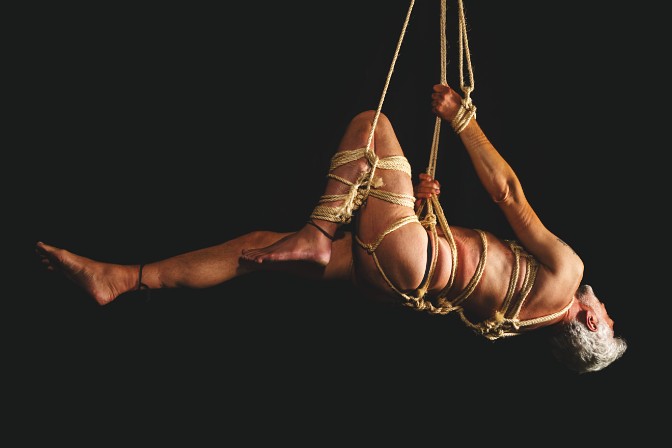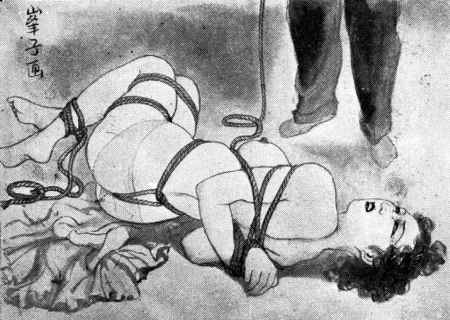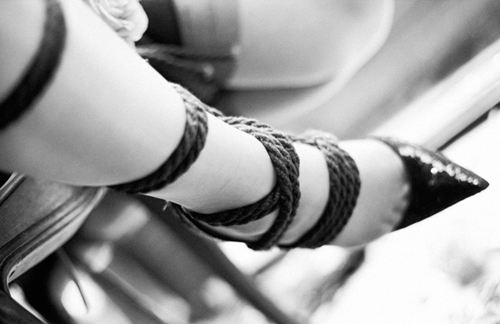Bondage (noun):
- The state of being a slave;
- A sexual practice that involves the tying up or restraining of a partner.
Bondage is a part of BDSM which involves the tying up or restraining of a ‘bottom’ or submissive partner. A sub can be bound or tied with rope, leather straps, a neck tie, chains or just about anything you can get your hands on. We love bondage so much that it inspired our company name!
For some though bondage is more than just a precursor to sex or spanking. To the truly devoted, bondage is a work of art and sometimes even a way of life.
Shibari Specifics
Japanese rope bondage is the art of tying a person using several pieces of very thin cord. Kinbaku (緊縛) means “tight binding” and Kinbaku-bi (緊縛美) means “the beauty of tight binding”. The word Shibari (縛り) is more commonly recognised in the west however, literally meaning “to tie” or “to bind”.
The person tying the rope isn’t referred to as a Master or Dom(me), rather they’re known as Nawashi (縄師). This means rope master, rope teacher, rope artist or “maker of string”. A Nawashi/ bottom relationship may or may not be sexual; the nature of the relationship depends on whether or not the binding is being performed as a part of BDSM, for artistic purposes or for something altogether different.
The purpose is to create a certain aesthetic. The binding is performed in a way which adheres to certain rules to create specific patterns. Often the way in which a submissive is bound will force them into an uncomfortable position. However, the experience of being bound is still a pleasurable one.
Japanese Rope Bondage is often used in suspension bondage, creating something even more impressive. The level of skill required when practising suspension bondage is even greater than in regular kinbaku. This is because the weight of the person has to be evenly distributed throughout the binding so that too much pressure is not placed on any one body part.

A Symbolic Bind
In Shibari, not only is the style of bondage important but the type of rope used is symbolic also. Usually, it will be a loose laid, three-strand jute cord referred to as “asanawa” or “hemp rope”. Using hemp rope in BDSM is symbolic to Japanese people in the same way that stocks are symbolic in western bondage, as hemp was once used to restrain prisoners.
Because of its unique style, interesting patterns, and explicit nature, it is sometimes used in contemporary artwork. The appeal of the knots is so strong that it has inspired jewellery, home furnishings, and fabulous fashion too!

Karada: Harness Your Desire
Outside of the bedroom, dungeon, or art studio, some people like to make Shibari a part of their everyday life. Karada is the Japanese word for ‘body’ and may be used when describing the Japanese body harness, or, rope dress.
A rope dress (also know as rope web or bondage web) is created by tying rope around the body in a very intricate, web-like manner. A rope dress can include a crotch rope which will stimulate a woman’s clitoris as she walks or fights against the rope. A bondage web can be worn under a woman’s normal clothing without anyone in the outside world knowing her naughty little secret.
There are many different kinbaku patterns which focus on different parts of the body, some concerned with pleasure, some concerned with pain and some only concerned with the overall aesthetic. A very popular binding style is the Ushiro Takate Kote which focuses on the upper body and breasts whilst restraining the arms behind the back.
If you have any thoughts or feelings, tips or tricks, comment down below to share your Shibari stories…
Have a great weekend!





